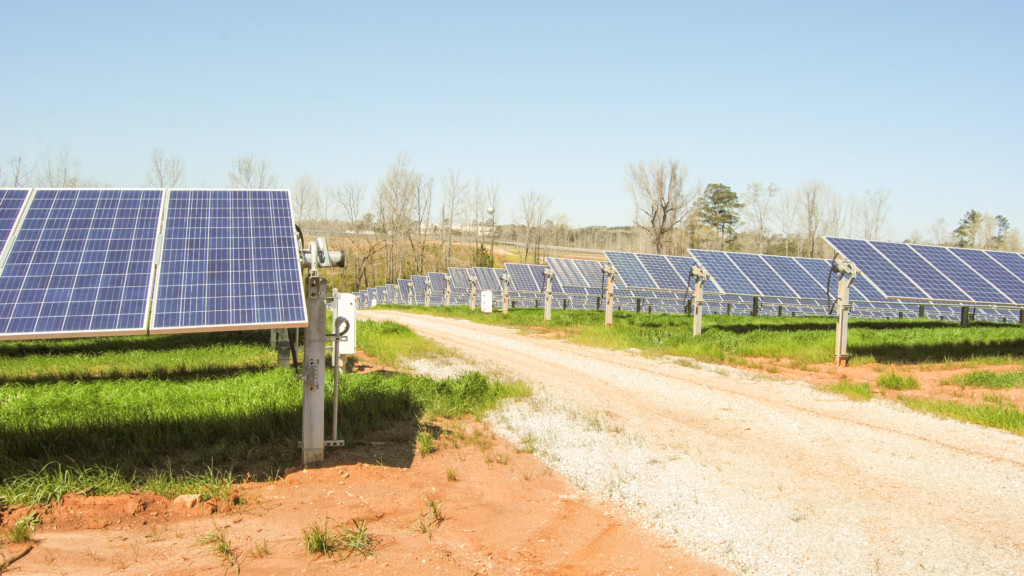Bills allowing state to OK solar farms tabled
Published 10:00 am Thursday, February 15, 2024
|
Getting your Trinity Audio player ready...
|
Two General Assembly bills that propose allowing the state to overrule county-level rejections of new solar farms will be carried over to 2025, though a related third bill in the Senate could still become law this year.
Del. Richard “Rip” Sullivan, D-Fairfax, filed House of Delegates Bill 636, which would create an approval process for projects capable of generating 50 or more megawatts that would be overseen by the State Corporation Commission rather than local governing bodies. Should a project meet the SCC’s to-be-determined criteria but be denied approval by its host locality, the project’s developer would be authorized under the legislation to appeal the local vote to the SCC.
Sullivan himself asked on Feb. 6 that his fellow members of a House subcommittee on labor and commerce to defer action on the bill until next year. The controversial bill, which supervisors in Isle of Wight and Surry counties oppose, has “gotten people’s attention,” Sullivan acknowledged in a floor speech.
“The bill has generated the kind of conversation I wanted it to,” he said.
Sullivan, in a January interview with The Smithfield Times, said his now-postponed bill aims to achieve benchmarks the General Assembly established four years ago with the passage of the Virginia Clean Economy Act, which mandates Dominion Energy transition to 100% carbon-free energy sources by 2045. The 2020 law, which Sullivan also sponsored, requires at least 16,100 megawatts, or just under two-thirds of the state’s electricity, come from solar or offshore wind farms by the end of 2035.
“We have to get somewhere winning the next couple of decades; the fact is the decisions that will either allow us or prohibit us from getting there may lie at the local level,” Sullivan said in his Feb. 6 floor speech, acknowledging “tension” between the Clean Economy Act’s goals and county governments that are increasingly saying no to solar developers.
Sen. Creigh Deeds, D-Charlottesville, sponsored the Senate version of Sullivan’s legislation – Senate Bill 567 – which he too asked the Senate Committee on Commerce and Labor on Feb. 9 to carry over to 2025.
“I am concerned that we’re not going to meet our goals unless we figure out how to do a better job of siting industrial solar but the reality is the bill’s probably not ready for prime time,” Deeds said.
Another Senate bill – SB 697 – would mandate “any ground-mounted solar or energy storage facility” be permitted “as a special exception” provided the installation is in compliance with a locality’s “reasonable criteria and requirements for siting.” The bill, sponsored by Sen. Schuyler VanValkenburg, D-Richmond, would explicitly define as unreasonable any “limits on the total amount, density, or size of solar and storage facilities that can be developed.”
VanValkenburg’s bill passed the full Senate in a 21-18 vote on Feb. 12. Only one Republican, Sen. Travis Hackworth, R-Richlands, joined Democrats in voting for the bill. Sen. Emily Jordan, R-Isle of Wight, joined 17 other Republicans in opposing it.
The Virginia Association of Counties, of which Isle of Wight and Surry are members, opposes all three solar-related bills.
Isle of Wight, which has approved nine solar farms since 2015, amended its zoning ordinance last year to include a provision capping the cumulative acreage devoted to solar at 2% of the county’s prime farmland, or 2,446 acres, which ValValkenburg’s legislation would likely nullify if passed. The nine solar farms account for roughly 2,226 acres, or 91% of the stated maximum. Moonlight Solar, a 44-megawatt 523-acre facility whose approval is on hold at its developer’s request, and Sycamore Cross, another solar farm that would span the Isle of Wight-Surry border and take more than 1,100 acres out of agricultural and forestry use, would collectively exceed Isle of Wight’s agreed-upon limit, though the cap isn’t a true “moratorium” according to Assistant County Administrator Don Robertson.
“The 2% cap is part of the criteria the Board will evaluate when considering applications,” Robertson said. “The cap does not prevent applicants from applying, nor does it prevent the Board from considering approval of a project that exceeds the current 2% cap.”
Surry, which has approved three solar farms to date, in 2022 rejected a 150-megawatt facility dubbed Loblolly Solar that would have placed panels on up to 900 acres of timberland at Routes 10 and 40, and in 2023 rejected the 20-megawatt Surry Solar Center that would have occupied 220 acres across the street from the 17th century Bacon’s Castle homestead and museum. Surry has imposed its own solar cap at 10% of the county’s developable land, or 15,278 acres, of which 8,260 already contain panels.






